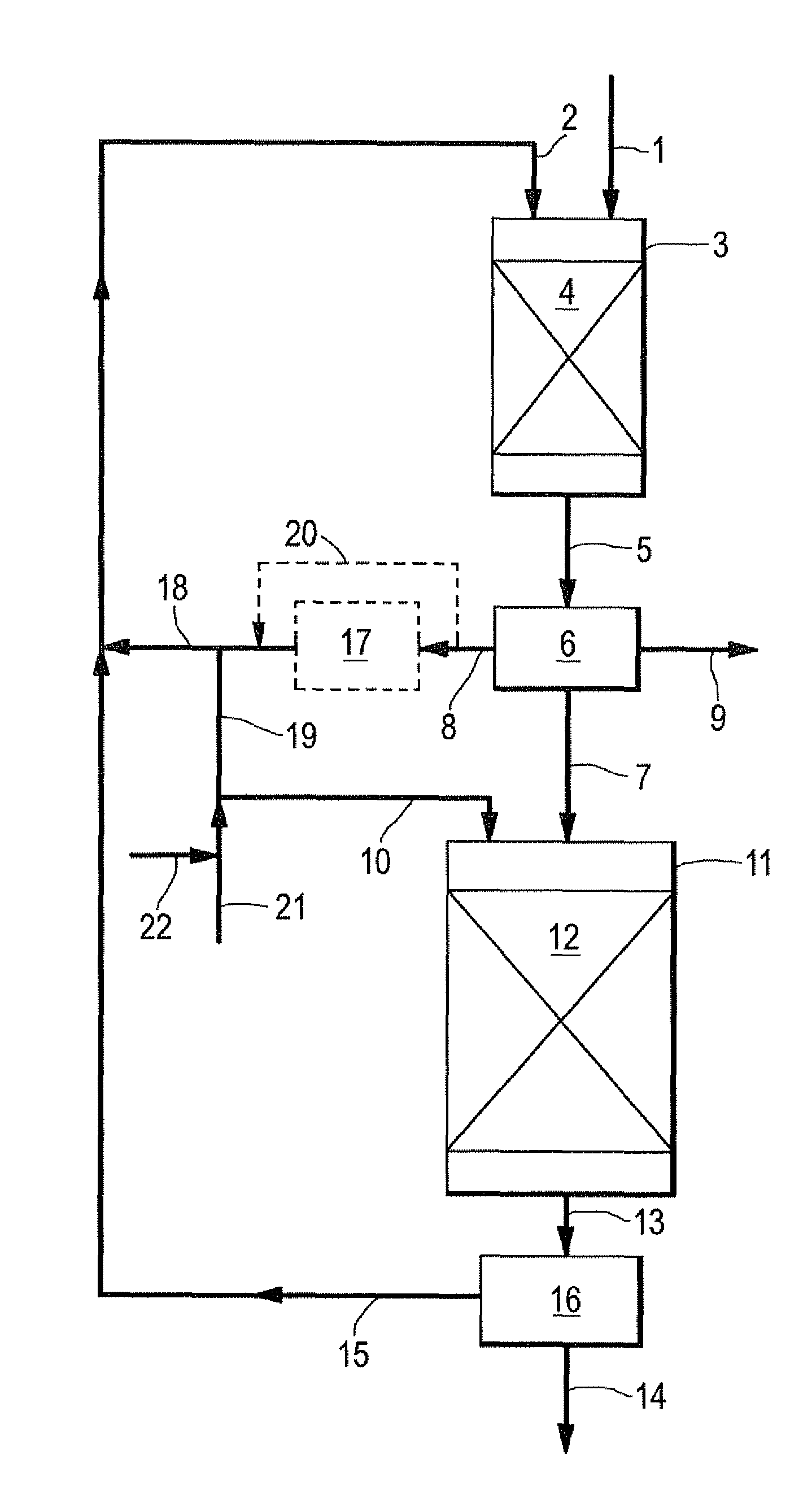Process for producing paraffinic hydrocarbons
a technology of paraffinic hydrocarbons and hydrocarbons, which is applied in the direction of hydrocarbon oil treatment products, physical/chemical process catalysts, metal/metal-oxide/metal-hydroxide catalysts, etc. it can solve the problems of undesirable cold flow properties of straight chain paraffins and mainly normal alkanes, and achieve excellent cold flow properties and optimise the stability of hydro-isomerisation catalysts.
- Summary
- Abstract
- Description
- Claims
- Application Information
AI Technical Summary
Benefits of technology
Problems solved by technology
Method used
Image
Examples
example
[0048]The invention will be further illustrated by means of the following non-limiting example.
[0049]Refined palm oil was, in a first reactor, hydrodeoxygenated over a bed of sulphided hydrogenation catalyst. The effluent of the first reactor was separated into a liquid stream rich in paraffinic hydrocarbons and a gaseous stream in a high temperature, high pressure separator. The liquid stream rich in paraffinic hydrocarbons had a water content of 20 mg / kg (20 ppmw) and was fed at a weight hourly space velocity of 1.0 kg oil per litre catalyst per hour to a second reactor containing a catalyst bed with 75 mL hydro-isomerisation catalyst (5 wt % NiO and 21 wt % W2O3 on amorphous silica-alumina) and 75 mL silicon carbide spheres. A stream of pure hydrogen was supplied to the second reactor at a rate of 1,500 NL hydrogen per kg liquid stream. In order to keep the hydro-isomerisation catalyst in sulphided form, di-tert-butyl polysulphide in an amount equivalent to 5000 ppm sulphur based...
PUM
| Property | Measurement | Unit |
|---|---|---|
| pressure | aaaaa | aaaaa |
| temperature | aaaaa | aaaaa |
| total pressure | aaaaa | aaaaa |
Abstract
Description
Claims
Application Information
 Login to View More
Login to View More - R&D
- Intellectual Property
- Life Sciences
- Materials
- Tech Scout
- Unparalleled Data Quality
- Higher Quality Content
- 60% Fewer Hallucinations
Browse by: Latest US Patents, China's latest patents, Technical Efficacy Thesaurus, Application Domain, Technology Topic, Popular Technical Reports.
© 2025 PatSnap. All rights reserved.Legal|Privacy policy|Modern Slavery Act Transparency Statement|Sitemap|About US| Contact US: help@patsnap.com

